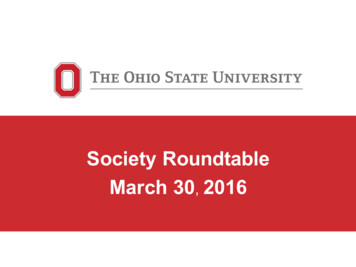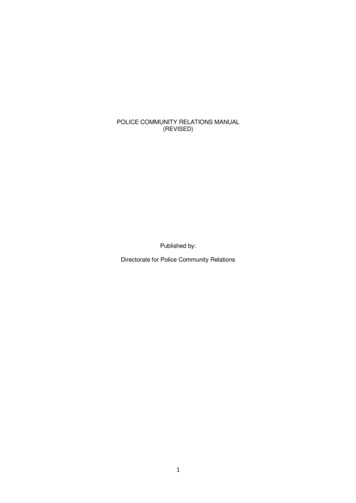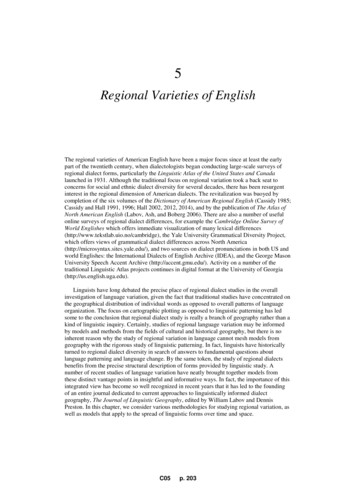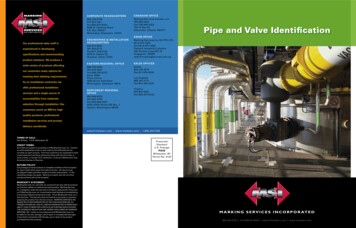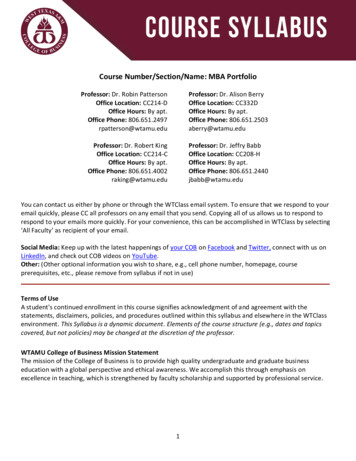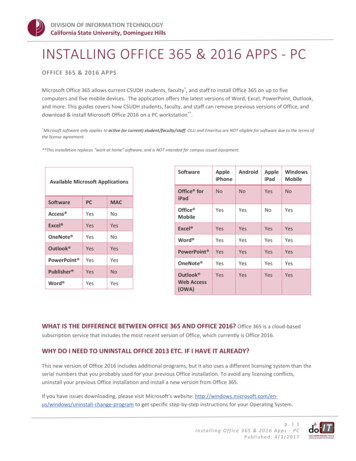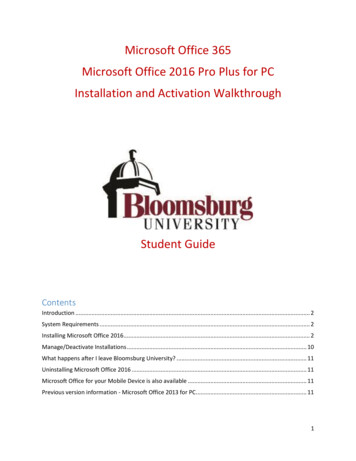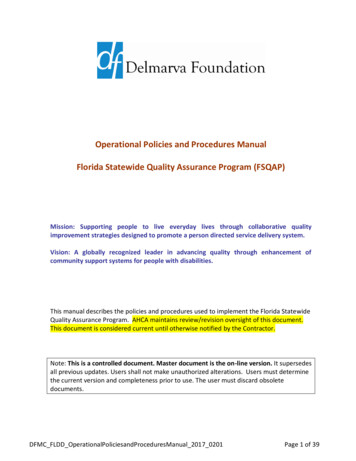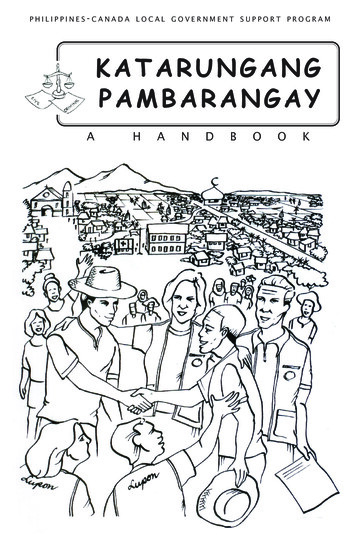
Transcription
PHILIPPINES-CANADA LOCAL GOVERNMENT SUPPORT PROGRAMKATARUNGANGPAMBARANGAYAHANDBOOK
Katarungang Pambarangay: A HandbookWRITERSMaricel VigoAtty. Marlon Manuel, SALIGANTECHNICAL AND EDITORIAL TEAMAtty. Marlon Manuel, SALIGANDivina Lopez, LGSPMyn Garcia, LGSPVic Alfaro, LGSPEdgar Catalan, LGSPRaissa Jajurie, SALIGAN MindanaoRaymond Salas, SALIGAN MindanaoPedrito Acosta, Region 12Liza del Norte, IPHCAllan Carpio, RCEDILLUSTRATIONS AND COVER DESIGNArnold BeroyaART DIRECTION AND LAYOUTAlecks P. Pabico/Disenyong Magilas
KATARUNGANGPAMBARANGAYAHANDBOOK
Katarungang Pambarangay: A HandbookCopyright 2004 Philippines-Canada Local GovernmentSupport Program (LGSP)All rights reservedThe Philippines- Canada Local Government SupportProgram (LGSP) encourages the use, translation, andadaptation and copying of this material for non-commercialuse, with appropriate credit given to LGSP.Although reasonable care has been taken in thepreparation of this handbook, neither the publisher and/orcontributor and/or writer can accept any liability for anyconsequence arising from the use thereof or from anyinformation contained herein.ISBN 971-92952-0-1Printed and bound in Manila, PhilippinesPublished by:Sentro ng Alternatibong Lingap Panligal (SALIGAN)1/F Hoffner Bldg., Social Development ComplexAteneo de Manila University, Loyola Heights, 1108Quezon City, Philippines (632) 4266001 local 4858 or 4860Philippines-Canada Local Government SupportProgram (LGSP)Unit 1507 Jollibee PlazaEmerald Avenue, 1600 Pasig City, Philippines (632) 637 3511-13www.lgsp.org.phThis project was undertaken with the financial support ofthe Government of Canada provided through the CanadianInternational Development Agency (CIDA).
PHILIPPINES-CANADALOCAL GOVERNMENTSUPPORT PROGRAMProgramme de soutien auxgouvernments locauxA JOINT PROJECT OFDepartment of the Interiorand Local Government (DILG)National Economic andDevelopment Authority (NEDA)Canadian InternationalDevelopment AgencyIMPLEMENTED BYAgriteam Canadawww.agriteam.caFederation of CanadianMunicipalities (FCM)www.fcm.ca
CONTENTSForewordAcknowledgementsPrefaceDefinition of TermsIntroductionviiixxixiii1PART 1: ACTUAL PROCESSESChapter 1 — Constitution of the LuponChapter 2 — Mediation throughthe Punong BarangayChapter 3 — Conciliation throughthe Pangkat TagapagkasundoChapter 4 — ArbitrationChapter 5 — Indigenous Modes of DisputeResolution920335258PART 2: BENEFITS, INCENTIVES AND AWARDSChapter 1 — ScholarshipsChapter 2 — Incentives and AwardsAnnexes — Katarungang Pambarangay 1112KP Form #13KP Form #14Notice to Constitute the LuponAppointment LetterNotice of AppointmentList of Appointed Lupon MembersLupon Member Oath StatementWithdrawal of AppointmentComplainant’s FormNotice of HearingSummon for the RespondentNotice for Constitution of PangkatNotice to Chosen Pangkat MemberNotice of Hearing (ConciliationProceedings)Subpoena LetterAgreement for Arbitration6973
1920KP Form # 21KPKPKPKPKPFormFormFormFormForm#####2223242526KP Form # 27KP Form # 28Arbitration AwardAmicable SettlementRepudiationNotice of Hearing for ComplainantNotice of Hearing for RespondentCertification to File Action (fromLupon Secretary)Certification to File Action (fromPangkat Secretary)Certification to File ActionCertification to Bar ActionCertification to Bar CounterclaimMotion for ExecutionNotice of Hearing (Re: Motion forExecutionNotice of ExecutionMonthly Transmittal of Final Reports
FOREWORDIT has always been a source of pride for us in theDepartment of the Interior and Local Government tobear witness to outstanding initiatives of partners inlocal governance. We are therefore pleased toacknowledge the latest publication of the PhilippinesCanada Local Government Support Program (LGSP),Katarungang Pambarangay: A Handbook.Republic Act 7160, otherwise known as the 1991Local Government Code, gives barangays themandate to enforce peace and order and providesupport for the effective enforcement of humanrights and justice. Decentralization has facilitated therecognition of the Katarungang Pambarangay orBarangay Justice System as an alternative venue forthe resolution of disputes. The challenge facing localgovernments now is to maximize and harness thekatarungang pambarangay as one of the mostvaluable mechanisms available in administeringjustice, advancing human rights protection andresolving and/or mediating conflict at the barangaylevel through non-adversarial means.Katarungang Pambarangay: A Handbookprovides local governments an easy-to-use tool withwhich to take up this challenge. It fills the need toincrease the awareness and understanding ofkatarungang pambarangay and its value as anempowering and alternative tool for the resolution ofcommunity and family disputes at the barangaylevel. With the fast-evolving demand for access tojustice, there is a need to utilize this mechanismmore strategically and proactively as a way topromote peace at the grassroots. The PunongBarangay (Barangay Heads), members of the LupongTagapamayapa (Peace Council) and communities willK A TA R U N G A N G PA M B A R A N G AYvii
benefit greatly from this publication. Moreover,development workers, the academe and nongovernmental and people’s organizations will alsofind this handbook useful in their work on barangayjustice.This undertaking complements the efforts of theDILG to popularize and mainstream governanceknowledge products through the Local GovernmentAcademy and the agency’s regional learning centers.The handbook provides a means for improvedaccess to dispute resolutions and will go a long waytowards enhancing knowledge on and strengtheningbarangay governance and justice. The DILG,therefore, congratulates the Philippines-Canada LocalGovernment Support Program for its commitmentand meaningful contributions to promotingexcellence in barangay governance as an integralelement of good, responsive and accountable localgovernance.HON. JOSE D. LINA JR.SecretaryDepartment of the Interior and Local GovernmentviiiA HANDBOOK
ACKNOWLEDGEMENTSTHE support, collaboration and creative contributionsof the following individuals and institutions areinvaluable and were essential to the completion ofthis publication:The Philippines-Canada Local Government SupportProgram led by Alix Yule and Marion MacedaVillanueva for providing the necessary direction andsupportThe Sentro ng Alternatibong Lingap Panligal(SALIGAN), especially Atty. Marlon J. Manuel, for theirpartnershipMaricel Vigo for the overall writeup and excellenttechnical contributionLGSP Area Managers Tess Gajo, Merlinda Hussein,Evelyn Jiz and LGSP Program Officers namely VicAlfaro, Edgar Catalan, Abduljim Hassan and CrisTagupa for their invaluable collaborationLGSP Local Resource Partners Raissa Jajurie andRaymond Salas of SALIGAN Mindanao, Pedrito Acosta(Reg 12), Liza del Norte of Institute of Primary HealthCare (IPHC), Allan Carpio of Resource Center forEmpowerment and Development (RCED) for theirtechnical contributionDivina Luz Lopez for her overall project managementand technical expertise in ensuring the quality of thispublicationMyn Garcia for providing technical and creativedirection, and overall supervision of the design,layout and productionK A TA R U N G A N G PA M B A R A N G AYix
Arnold Beroya for the illustrations and Alecks Pabicofor layout and overall art directionRaymond Oliveros, Janilo Rubiato and TessTajanlangit for the translation of the handbook toTagalog, Cebuano and Ilonggo, respectivelyRia Adapon and Sef Carandang for overallcoordination and editorial workGigi Barazon and the rest of the LGSP administrativestaff for providing support.xA HANDBOOK
PREFACEKATARUNGANG Pambarangay: A Handbook is thelatest publication of the Philippines-Canada LocalGovernment Support Program (LGSP) as part of itsmandate to mainstream effective and responsivebarangay governance.Republic Act 7160 or the Local Government Codeof 1991 expanded the scope and powers of theKatarungang Pambarangay or the Barangay JusticeSystem designed not merely to decongest the courtsof cases but to address inequalities in access tojustice, particularly experienced by marginalizedcommunities. The barangays, being the basicpolitical unit in the country, is in the most strategicposition to facilitate resolution or mediation ofcommunity and family disputes, alongside itsmandate to deliver basic services.In empowering local government units in WesternVisayas and Mindanao, LGSP has designed initiativesthat strengthen barangay governance, includingenhancing and mainstreaming the use of and accessto the barangay justice system. The KatarungangPambarangay: A Handbook was designed to providea user-friendly, easy to read and simple tool topromote the knowledge of the katarungangpambarangay as an effective alternative mechanismfor dispute resolution.This handbook aims to increase theunderstanding of the Punong Barangays (barangayheads) and members of the Lupong Tagapamayapa(Barangay Peace Council) on the processes andprocedures of the barangay justice system to enablethem to maximize its use in their communities. It isalso intended to provide a practical overview for theK A TA R U N G A N G PA M B A R A N G AYxi
members of the communities — paralegals, nongovernment and people’s organizations — regardingthe role and benefits of the katarungangpambarangay in their lives.By doing so, LGSP hopes that it would somehowmake a difference in people’s lives by contributing toa better understanding and strategic administrationof the barangay justice system. KatarungangPambarangay: A Handbook is a modest contributionto creating greater awareness of an alternative towhat can be an elitist and complex legal system,often characterized by an arduous legal process. Thispublication is a way to empower grassrootscommunities to exact their basic rights and providethem a viable way to do so.The Philippines-Canada Local GovernmentSupport ProgramxiiA HANDBOOK
DEFINITIONOFTERMSAdjudication is the power of courts or quasi-judicialagencies to decide cases filed before them andfalling within their jurisdiction.Amicable Settlement is an agreement reachedduring mediation and conciliation proceedings.Arbitration is a process wherein the third partyfrom outside the judicial system is chosen by partiesto hear and decide their dispute.Arbitration Award is the decision reached by eitherthe lupon chairperson or pangkat, as the case maybe, upon prior agreement in writing by the parites toa dispute for the adjudicators to resolve it.Attachment is a provisional remedy in the form ofan order issued by a judge before whom the case ispending by which the property is taken into legalcustody as security for satisfaction of a judgmentobtained by the prevailing party, either at thecommencement of the action or any time after thefiling of the case before the final judgmentComplainant — plaintiffComplaint is a concise statement of ultimate factsconstituting the plaintiff’s cause and causes ofaction.Conciliation is a process wherein the Pangkatforgoes the power to decide or recommend but assistthe parties to isolate issues and options to reach asettlement by consensus that jointly satisfies theirneedsK A TA R U N G A N G PA M B A R A N G AYxiii
Delivery of Personal Property (Replevin) isprovisional remedy by which a judge before whoman action is pending for the recovery of personalproperty issues an order for the delivery of suchproperty to the movant or the party filing the petitionupon filing of a bond to guarantee its return or toanswer for the damages.Execution is the process of exacting satisfaction foron or both of the parties through compulsory orcoercive means. It entails the enforcement of theterms of the amicable settlement or arbitration awardin so far as this may enjoin or command any of theparties to perform an act, give something or refrainfrom doing some actHabeas Corpus is a judicial proceeding for thepurpose of releasing a person who is illegallydeprived of liberty or restoring rightful custody tothe person who has been deprived of.Incompetent means a person who is suffering thepenalty of civil interdiction; or who is a hospitalizedleper, prodigal, deaf and dumb who is unable tocommunicate; one who is of unsound mind, eventhough he has a lucid intervals and a person notbeing unsound mind but by reason of age, disease,weak mind, and other similar causes, cannot,without outside aid, take care of himself and mangehis property, becoming thereby an easy prey fordeceit and exploitation.Jurisdiction is an authority to hear and decide acase and given by law and cannot be agreed by thepartiesKatarungang Barangay (KP) is a system of justiceadministered at the barangay level for the purpose ofamicable settling disputes through mediation,conciliation or abitration among the family orbarangay without resorting to the courts.xivA HANDBOOK
Lupong Tagapamayapa (Lupon) is a bodyorganized in every barangay composed of PunongBarangay as the chairperson and not less than ten(10) and more than twenty from which the membersof every Pangkat shall be chosen.Mediation is a process wherein the Luponchairperson or Barangay Chairperson assists thedisputing parties to reach a settlement by consensusthat jointly satisfies their needs.Minor is a person below eighteen (18) years of age.Next of Kin is an individual who is a relative or aresponsible friend with whom the minor orincompetent livesPangkat Tagapagkasundo (Pangkat) is aconciliation panel constituted from the Luponmembership for every dispute brought before theLupon consisting of three (3) members after thePunong Barangay has failed in his mediation efforts.Preliminary injunction is a provisional remedy inthe form of an order issued by a judge before whomthe case is pending at any stage before the finaljudgment requiring a person to refrain from aparticular act.Repudiation is an act of rejecting the validity orrefusing to accept the terms and conditions ofagreement on the ground of vitiation of consent byfraud, violence or intimidation.Respondent — defendantStatute of Limitations is the law which bars ordoes not allow the institution or filing of an action orcase against another after the expiration of theperiod prescribe d for such action or offenseSupport Pendente Lite is a provisional remedy in aK A TA R U N G A N G PA M B A R A N G AYxv
form of an order issued by a judge before whom thecase is pending granting allowance, dwelling,clothing, education and medical attendance to theperson entitled thereof.Venue is the place where the case is to be heard anddecided. This is not fixed by law except in criminalcases, and can be agreed upon by the parties.xviA HANDBOOK
INTRODUCTIONTHE Katarungang Pambarangay or Barangay JusticeSystem is a community-based dispute settlementmechanism that is administered by the basic politicalunit of the country, the barangay. As a communitybased mechanism for dispute resolution, it coversdisputes between members of the same community(generally, same city/municipality) and involves thePunong Barangay and other members of thecommunities (the Lupon members) as intermediaries(mediators, conciliators, and, sometimes,arbitrators).The establishment and operation of the BarangayJustice System is mandated by Republic Act No. 7160or the Local Government Code of 1991. Prior to thislaw, however, the establishment of the BarangayJustice System had been covered by PresidentialDecree 1508 in 1978 and Batas Pambansa Blg. 337or the 1983 Local Government Code.When PD 1508 first decreed the setting up of theBarangay Justice System, the law had the followingobjectives:XTo promote the speedy administration ofjusticeXTo minimize the indiscriminate filing of casesin courtsXTo minimize the congestion of court docketsand thereby enhance the quality of justicedispensed by the courtsXTo perpetuate and recognize the time-honoredtradition of amicably settling disputes at thecommunity level
These same objectives are stated in theKatarungang Pambarangay Rules that werepromulgated by the Department of Justice on June 1,1992, pursuant to the mandate of the LocalGovernment Code. These rules serve as theimplementing rules for the provisions of the LocalGovernment Code on the establishment,administration, and operation of the Barangay JusticeSystem.Under the Barangay Justice System, the mainstrategy for settling disputes is to provide a venuefor the disputing parties to search for a solution thatis mutually acceptable. Hence, the primary role ofthe system is not to decide disputes and impose asolution on the parties but to assist the parties indiscussing the possible amicable settlement of theirdisputes. The Punong Barangay and the communityconciliators (Lupon members) do not act as judges oradjudicators of disputes but as facilitators for thedisputing parties’ discussion of possible solutions.For this reason, the personal appearance andparticipation of the disputing parties is necessary,while the non-appearance of the parties will havecorresponding sanctions. Also because of the needfor the disputing parties’ personal participation in theconciliation proceedings, disputes involving nonnatural persons likecorporations are notSimply put, thesubject to theBarangay JusticeconciliationSystem provides aproceedings of thefriendly, inexpensive,Barangay Justiceand speedy forum forSystem.the settlement ofdisputes where theparties can freelyexplore options foramicably resolvingtheir disputes withoutresorting to thecourts.2The BarangayJustice Systemprovides analternative mode fordispute resolution tothe costly and lengthyprocess of settlingA HANDBOOK
disputes in regular courts. Instead of going throughthe very technical procedure of filing formalpleadings and presenting evidence in courts, theparties of a dispute are given the opportunity to tryto talk to each other and resolve their disputesamicably. The technical processes and rules that areusually applied in court proceedings are not applied.Filing a case in court, or defending oneself againstsuch a case,would necessarilyIn some areas where theentail the servicescourts are inaccessible, bothof lawyers. In thebecause of location andBarangay Justicebecause of the prohibitiveSystem, however,costs of litigation, thethe parties do notBarangay Justice System,need to secure thewith all its limitations, canservices ofbe the only venue that thelawyers. In fact,poor can avail of for thethe law prohibitsresolution of their disputes.the participationof lawyers in theconciliation proceedings. While cases that are triedin courts generally take years to be resolved, casesthat go through the Barangay Justice System wouldgenerally take only a few weeks.Simply put, the Barangay Justice System providesa friendly, inexpensive, and speedy forum for thesettlement of disputes where the parties can freelyexplore options for amicably resolving their disputeswithout resorting to the courts.On the issue of access to justice, the BarangayJustice System provides an accessible mechanism forresolving the justice issues of the poor.In some areas where the courts are inaccessible,both because of location and because of theprohibitive costs of litigation, the Barangay JusticeSystem, with all its limitations, can be the only venuethat the poor can avail of for the resolution of theirdisputes.K A TA R U N G A N G PA M B A R A N G AY3
The Barangay Justice System is also envisioned tocomplement the courts in administering justice. Forcases that are covered by the Barangay JusticeSystem, it is compulsory for the parties to gothrough the Barangay Justice System proceedingsfirst before going to court. Failure to do so wouldmean the dismissal of the parties’ claim orcounterclaim. It is only when the Barangay JusticeSystem has failed to resolve the dispute that theparties will be allowed to bring their case to court.The Supreme Court issued AdministrativeCircular No. 14-93 on July 15, 1993 directing thecourts to ensure compliance with the requirement ofprior recourse to the Barangay Justice as a conditionfor filing a complaint in court for cases that arecovered by the system.With more disputing parties settling theirdisputes at the community level, it is expected thatthe filing of cases between members of the samecommunity will be minimized. This, in turn, will helpreduce the congestion of the courts’ dockets and,hopefully, improve the efficiency and quality of thecourts’ dispensation of justice. The Barangay Justicesystem is, thus, both an alternative andcomplementary mode of resolution to the courtsystem.The Barangay Justice System maximizes the useof time-honored traditions and practices ofcommunities in settling disputes betweencommunity members. Filipinos traditionally resort tothe help of older members of the family, communityelders, or tribe leaders in resolving disputes betweenmembers of the same family or community. This isthe common practice that is recognized andformalized by the Barangay Justice System. In lieu offamily members, community elders, or tribe leaders,the Barangay Justice System uses the PunongBarangay and the Lupon Members, who areappointed from the respected members of the4A HANDBOOK
community. In recognition of traditional customarypractices in some indigenous communities, the lawon the Barangay Justice System provides that incommunities that have distinct traditional practicesof settling disputes, the customs and traditions ofthe indigenous cultural communities shall beapplied. Thus, local systems of settling disputesthrough their councils of datus or elders arerecognized and followed with the same force andeffect as the procedure laid down in the law.The Supreme Court issued AdministrativeCircular No. 14-93 on July 15, 1993 directing thecourts to ensure compliance with therequirement of prior recourse to the BarangayJustice as a condition for filing a complaint incourt for cases that are covered by the system.The strength of the Barangay Justice System liesin the fact that it is based in the community itself,and is administered by community members usingtraditional practices in dispute resolution. With thisset-up, the disputing parties are expected to be morecomfortable in discussing their problems and inexploring solutions to the disputes. It is likewiseexpected that the community-based set-up of theBarangay Justice System will ensure that the partieswill honor the amicable settlement that was agreedupon. Ultimately, the Barangay Justice System isenvisioned to live up to its name. It is expected toensure the dispensation of justice at the grassrootslevel.The first part of the handbook discusses theactual processes of the Katarungang Pambarangay(KP). The second part deals with the benefits,incentives and awards of the system. The Annexescontains samples of al the KP forms that are used inthe process, for reference.K A TA R U N G A N G PA M B A R A N G AY5
This handbook has also been translated to threePhilippine dialects, namely Tagalog, Cebuano andIlonggo, to facilitate greater use and understandingof the system at the community level. Also, ahandbook on the Barangay Justice System in ARMM isbeing developed, which takes a look at the existingindigenous/traditional mechanisms of dispensingjustice in the Muslim and Moro cultures.6A HANDBOOK
PARTONEACTUALPRACTICES
CHAPTECONSTITUTIONRONOF THEELUPONGOOD MORNING, KAPITAN PEDRING.ONE MORNINGHELLO. GOOD MORNING,IN BARANGAYTOO. CONGRATULATIONSPAG-ASA.TO THE NEW PUNONGBARANGAY OF BAGONGDIWA. WHAT CAN I DOFOR YOU?THANK YOU. ACTUALLY, I CAMETO ASK SOME QUESTIONSREGARDING THE ADMINISTRATION OF THEBARANGAYJUSTICESYSTEM INWELL, YOU HAVE COMETO THE RIGHTPERSON, SITDOWN ANDHAVE SOMECOFFEE.OURBARANGAY.YOU KNOW CELIA, BARANGAY JUSTICE ORKATARUNGANG PAMBARANGAY IS ONEIMPORTANT SYSTEM IN OUR BARANGAY TORESOLVE DISPUTES FAIRLY AND SPEEDILY.THIS IS A SALIENT PART OF THEBARANGAY‛S FUNCTION TO PROMOTEPEACE AND HARMONIOUS RELATIONSHIPSAMONG COMMUNITY MEMBERS. THIS ISALSO IN RECOGNITION OF THE CAPACITYOF THE BARANGAY AND ITS LEADERS TOFACILITATE THE SETTLEMENT ANDRESOLUTION OF DISPUTES AT THEIR LEVEL.
I SEE. BUT IS IT ONLY THE PUNONGBARANGAY WHO HAS THE AUTHORITY TOCONSTITUTE THE LUPON?YES, THE PUNONG BARANGAY CANAPPOINT THE LUPON MEMBERS. ITIS HIS/HER EXCLUSIVEPREROGATIVE— NONEED FOR APPROVAL,CONFIRMATION OR RATIFICATION OF THESANGGUNIANG BARANGAY.WHAT IF THE PUNONGBARANGAY FAILS TOORGANIZE THE LUPON?HE/SHE CAN BE CHARGEDOF NEGLECT OF DUTYAND BE SUBJECTED TOADMINISTRATIVESANCTIONS.REALLY? WHEN AND HOWWITHIN FIFTEEN (15)LUPON?OF OUR TERM ASCAN I CONSTITUTE THEDAYS FROM THE STARTPUNONG BARANGAY, WESHOULD ISSUE A NOTICETO CONSTITUTE THELUPON AND PREPARE THELIST OF THE NAMES OFPROPOSED LUPONMEMBERS.HOW MANY PEOPLESHOULD I INCLUDEIN THE LIST?10A MINIMUM OF TENAND A MAXIMUM OFTWENTY PERSONS.A HANDBOOK
WHO ARE QUALIFIED TO BE MEMBERS OF THELUPON?ANYBODY WHO IS AN ACTUAL RESIDENTOR WORKING IN THE BARANGAY, OFLEGAL AGE AND POSSESSES THE FOLLOWINGQUALITIES: INTEGRITY, IMPARTIALITY, INDEPENDENCE,FAIRNESS, REPUTATION FOR PROBITY, PATIENCE,RESOURCEFULNESS, OPEN-MINDEDNESS ANDFLEXIBILITY, CAN BE A MEMBER OF THE LUPON.QUALIFIED AS LUPONMEMBERSACTUAL RESIDENTS/DISQUALIFIED TO BELUPON MEMBERSBELOW 18 YRS OF AGEWORKING IN THEINCOMPETENTBARANGAYCONVICTED OF A CRIMEOF LEGAL AGECARRYING WITH ITWITH THE FOLLOWINGPENALTIES OF PERPETUALQUALITIES:INTEGRITY,OR TEMPORARYDISQUALIFICATION FROMIMPARTIALITY,HOLDING PUBLIC OFFICEINDEPENDENCE,ELECTED GOVERNMENTFAIRNESS,OFFICIALREPUTATION FORMEMBER OF ARMEDPROBITY,FORCES WHO IS IN THEPATIENCE,ACTIVE SERVICERESOURCEFULNESS,OPEN-MINDEDNESSFLEXIBILITYK A TA R U N G A N G PA M B A R A N G AY11
AFTER IDENTIFYING THE10-20 MEMBERS OF MYLUPON, WHAT ARE THENEXT STEPS?YOUR SECRETARY, WHO ISALSO THE CONCURRENTSECRETARY OF LUPON,SHALL PREPARE A NOTICETO CONSTITUTE THELUPON USING KP FORM 1.AFTER THAT,WHERE SHALLWE PUT THENOTICE?THIS NOTICE SHALL BE POSTED IN THREECONSPICUOUS OR STRATEGIC PLACESWITHIN THE BARANGAY. THE NOTICESHALL CONTAIN AN INVITATION TO ALLBARANGAY MEMBERS TO ENDORSE OROPPOSE THE PROPOSEDAPPOINTMENT OF ANY PERSON/SINCLUDED IN THE LIST. THERECOMMENDATION SHALL BE MADE WITHIN THE PERIODOF POSTING FOR THREE WEEKS.12A HANDBOOK
KP FORM # 1: NOTICE TO CONSTITUTE THE LUPONRepublic of the PhilippinesProvince ofCITY/MUNICIPALITY OFBarangayOFFICE OF THE PUNONG BARANGAY, 20NOTICE TO CONSTITUTE THE LUPONTo All Barangay Members and All Other Persons Concerned:In compliance with Section 1(a), Chapter 7, Title One, Book III, LocalGovernment Code of 1991 (Republic Act No. 7160), of the KatarungangPambarangay Law, notice is hereby given to constitute the LupongTagapamayapa of this Barangay. The persons I am considering forappointment are the 7.18.19.20.21.22.23.24.25.They have been chosen on the basis of their suitability for the task ofconciliation considering their integrity, impartiality, independence of mind,sense of fairness and reputation for probity in view of their age, socialstanding in the community, tact, patience, resourcefulness, flexibility, openmindedness and other relevant factors. The law provides that only thoseactually residing or working in the barangay who are not expresslydisqualified by law are qualified to be appointed as Lupon members.All persons are hereby enjoined to immediately inform me and of theiropposition to or endorsement of any or all the proposed members orrecommend to me other persons not included in the list but not later than theday of , 20 (the last day for posting this notice).Punong BarangayIMPORTANT: This notice is required to be posted in three (3) conspicuousplaces in the barangay for at least three (3) weeksWARNING: Tearing or defacing this notice shall be subject to punishmentaccording to law.K A TA R U N G A N G PA M B A R A N G AY13
YOU MEAN, ANY MEMBER OF MYBARANGAY CAN PROTEST ORRECOMMEND SOMEBODY FROM THEBARANGAY?YES, KAPITANA. AND TEN DAYS AFTER THELAST DAY OF POSTING, YOUSHALL PUT IN WRITINGYOUR APPOINTMENT OFYOUR LUPON MEMBERSUSING KP FORM 2, DULY SIGNED BY THEPUNONG BARANGAY AND ATTESTED BY THEBARANGAY SECRETARY.KP FORM # 2: APPOINTMENT LETTERRepublic of the PhilippinesProvince ofCITY/MUNICIPALITY OFBarangayOFFICE OF THE PUNONG BARANGAY, 20(Date)APPOINTMENTTO:Pursuant to Chapter 7, Title One, Book III, Local Government Code of 1991(Republic Act No. 7160), you are hereby appointed MEMBER of theLupong Tagapamayapa of this Barangay effective upon taking your oath ofoffice and until a new Lupon is constituted on the third year following yourappointment.Punong BarangayATTESTED:Barangay SecretaryTHE NEWLY APPOINTED LUPONMEMBERS SHALL TAKE THEIR OATHIMMEDIATELY BEFORE YOU ASPUNONG BARANGAY USING KPFORM 5.14A HANDBOOK
KP FORM # 5: LUPON MEMBER OATH STATEMENTRepublic of the PhilippinesProvince ofCITY/MUNICIPALITY OFBarangayOFFICE OF THE PUNONG BARANGAYOATH OF OFFICEPursuant to Chapter 7, Title One, Book II, Local Government Code of 1991(Republic Act No. 7160), I , being duly qualified andhaving been duly appointed MEMBER of the Lupong Tagapamayapa of thisBarangay, do hereby solemnly swear (or affirm) that I will faithfully andconscientiously discharge to the best of my ability, my duties and functions assuch member and as member of the Pangkat ng Tagapagkasundo in which Imay be chosen to serve; that I will bear true faith and allegiance to theRepublic of the Philippines; that I will support and defend its Constitution andobey the laws, legal orders and decrees promulgated by its duly constitutedauthorities; and that I voluntarily impose upon myself this obligation withoutany mental reservation or purpose of evasion.SO HELP ME GOD. (In case of affirmation the last sentence will be omitted.)MemberSUBSCRIBED AND SWORN to (or AFFIRMED) before me this dayof , 20 .Punong BarangayAFTER THEIROATH TO
Katarungang Pambarangay: A Handbook WRITERS Maricel Vigo Atty. Marlon Manuel, SALIGAN TECHNICAL AND EDITORIAL TEAM Atty. Marlon Manuel, SALIGAN Divina Lopez, LGSP
